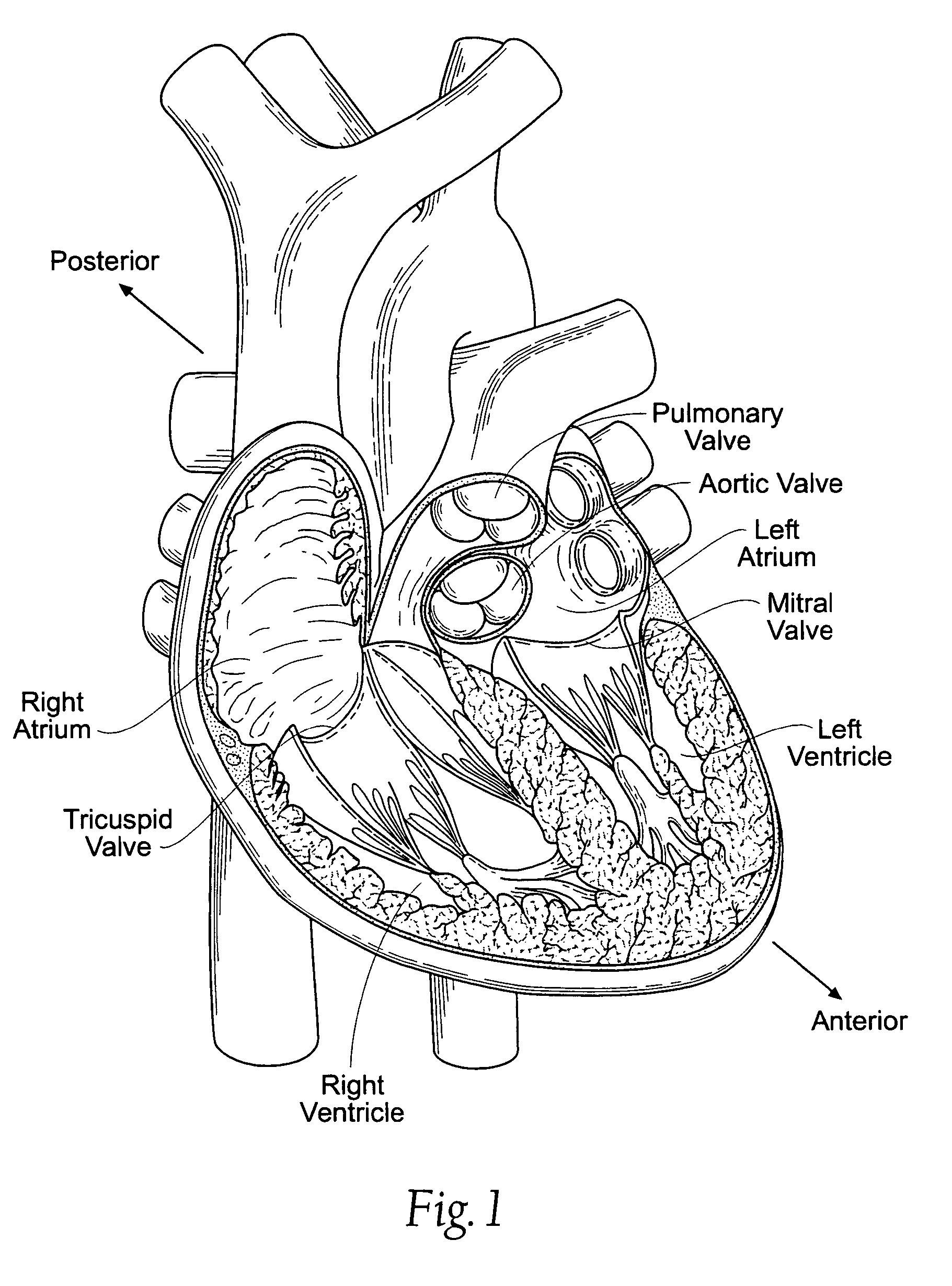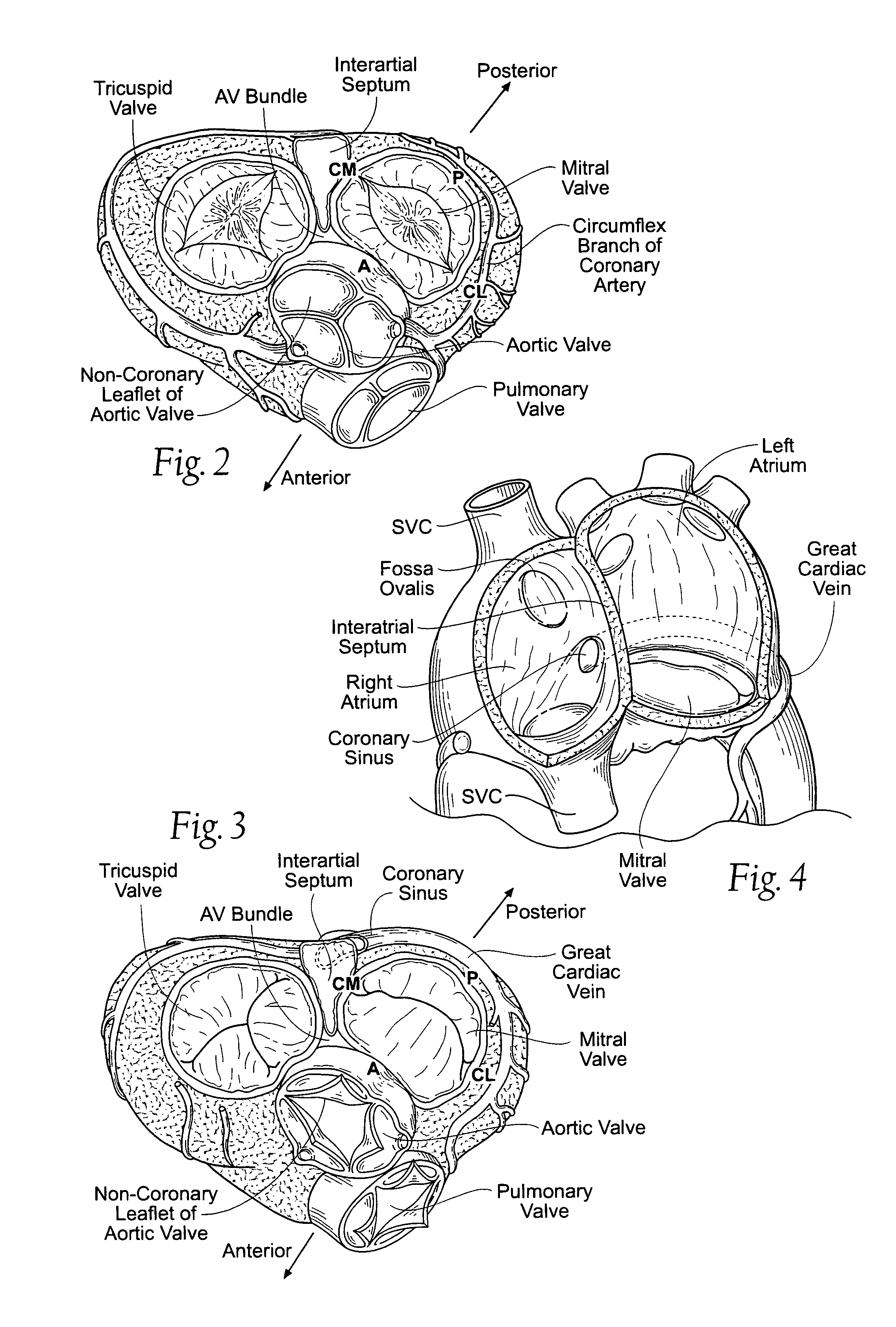Methods for reshaping a heart valve annulus using a tensioning implant
a heart valve and tensioning technology, applied in the field of reshaping the heart valve annulus using a tensioning implant, can solve the problems of leaflet flailing, valve malfunction, chordae tendineae (the chords), etc., to achieve the effect of improving the septal-to-lateral dimension of the valve, maintaining the tension, and improving leaflet coaption
- Summary
- Abstract
- Description
- Claims
- Application Information
AI Technical Summary
Benefits of technology
Problems solved by technology
Method used
Image
Examples
Embodiment Construction
[0093]Although the disclosure hereof is detailed and exact to enable those skilled in the art to practice the invention, the physical embodiments herein disclosed merely exemplify the invention, which may be embodied in other specific structure. While the preferred embodiment has been described, the details may be changed without departing from the invention, which is defined by the claims.
I. Trans-Septal Implants for Direct Shortening of the Minor. Axis of a Heart Valve Annulus
[0094]A. Implant Structure
[0095]FIGS. 10A and 10B show embodiments of an implant 10 that is sized and configured to extend across the left atrium in generally an anterior-to-posterior direction, spanning the mitral valve annulus. The implant 10 comprises a spanning region or bridging element 12 having a posterior tissue anchoring region 14 and an anterior tissue anchoring region 16.
[0096]The posterior anchoring region 14 is sized and configured to be anchored in a region of atrial tissue above the posterior m...
PUM
 Login to View More
Login to View More Abstract
Description
Claims
Application Information
 Login to View More
Login to View More - R&D
- Intellectual Property
- Life Sciences
- Materials
- Tech Scout
- Unparalleled Data Quality
- Higher Quality Content
- 60% Fewer Hallucinations
Browse by: Latest US Patents, China's latest patents, Technical Efficacy Thesaurus, Application Domain, Technology Topic, Popular Technical Reports.
© 2025 PatSnap. All rights reserved.Legal|Privacy policy|Modern Slavery Act Transparency Statement|Sitemap|About US| Contact US: help@patsnap.com



